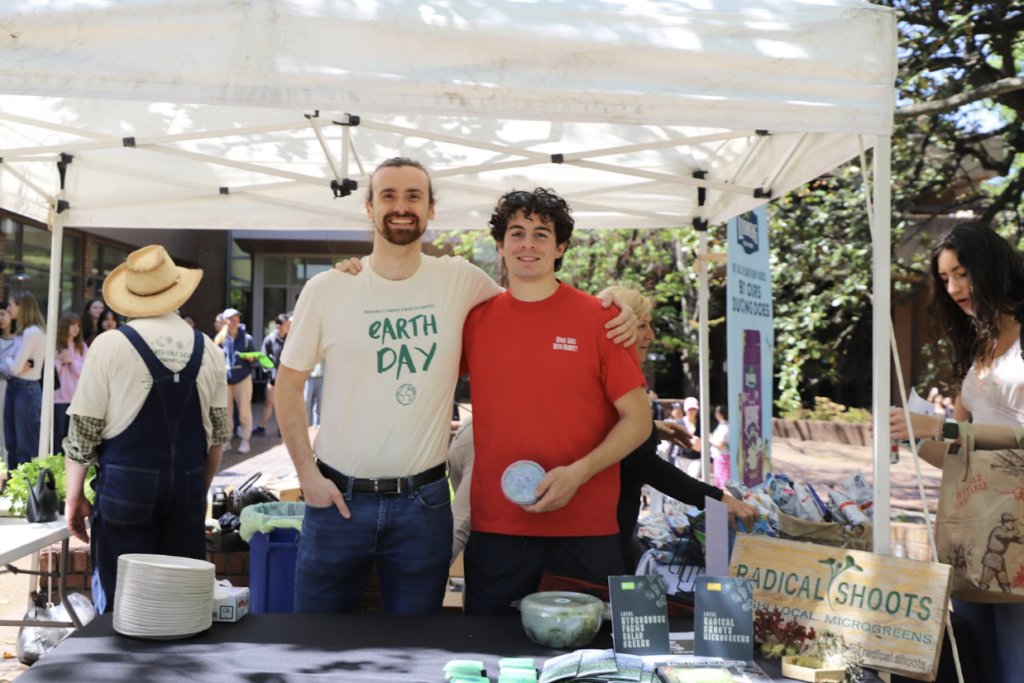Tara Chalasani | November 9th, 2024
The Rand Farmer’s Market has become a popular choice among Vanderbilt students for fresh food through Campus Dining. By partnering with local farms, Campus Dining allows students to spend meal swipes on fresh produce and goods once or twice a semester. This event also serves to promote Vanderbilt’s sustainability initiatives, and this year, it highlighted the development of a solar farm built in Panola County, Mississippi. The farm is part of a multi-year collaboration with Clearloop, a Silicon Ranch company based in Nashville. Vanderbilt’s involvement in the project furthers the university’s commitment to carbon neutrality, but it is important to examine this endeavor beyond its label as a clean energy solution.
What is Clearloop and Vanderbilt’s carbon neutral collaboration?
Clearloop is a company that builds solar farms, large collections of solar panels that generate electricity, in underserved communities, providing energy for thousands of homes and reducing carbon emissions. They work with organizations like Vanderbilt looking to reach and maintain carbon neutrality. The university first announced its partnership with Clearloop in April 2023, committing — along with 30 other organizations — to supporting the first three solar farms in Panola County. The first farm was expected to neutralize all carbon emissions from the 2021-22 school year.
Vanderbilt celebrated the latest solar farm in Mississippi by sharing the project’s impact with the campus community. On Oct. 15, they brought produce and homemade goods from Panola County to Rand Farmer’s Market. The following day, a panel was conducted on how Vanderbilt’s carbon neutrality has paved the way for economic development at The Wond’ry. Vanderbilt’s money supports the solar farms, so energy generated for these homes is partially accredited to the university. In addition, because the project creates new jobs and brings more attention to the communities it supports, Panola County’s economy can flourish. By investing in Clearloop’s project, Vanderbilt is gaining credit for its environmental impact while contributing to the economic growth of Mississippi communities.

Photo Courtesy: Vanderbilt Campus Dining
How exactly do solar farms contribute to carbon neutrality?
Solar energy is a renewable energy source, along with wind and hydroelectric energy. Electromagnetic radiation is captured from the sun and turned into electrical energy. Photovoltaics, one of the principal solar energy technologies, is used on solar farms. When a solar panel catches sunlight, photovoltaic cells absorb solar energy and cause an electrical current.
One advantage of this technology is that it does not require any fossil fuels to operate, so the manufacturing and installation of solar panels is considered to have a negligible negative environmental impact. Since photovoltaic cells rely exclusively on the sun to create electricity, the switch to solar energy dramatically reduces carbon emissions. Additionally, because the sun is an abundant source of energy, producing the necessary electricity is attainable. By getting credit for reduced carbon emissions, Vanderbilt can achieve carbon neutrality.
Is this the impact the Vanderbilt community wants?
Even though Vanderbilt has neutralized their carbon footprint, there is still the question of whether students prefer that these efforts happen on campus rather than off campus. By bringing fresh produce to Rand Farmer’s Market and hosting a panel at The Wond’ry, Vanderbilt is celebrating an effort that is happening in another state, which begs the question: is it more important that the university instead focuses on reducing greenhouse gas emissions on campus?

Photo Courtesy: Vanderbilt Campus Dining
On the other hand, the money invested in these solar farms has more than just an environmental impact — the farms provide energy for communities and stimulate their economy. The connection between the Vanderbilt community and the solar farms can seem nonexistent at times, but this collaboration has nonetheless contributed to renewable energy for a good cause.
References
Rabaia, M. K. H., Abdelkareem, M. A., Sayed, E. T., Elsaid, K., Chae, K.-J., Wilberforce, T., & Olabi, A. G. (2021). Environmental impacts of solar energy systems: A review. Science of the Total Environment, 754(141989), 1-19. https://www.sciencedirect.com/science/article/pii/S0048969720355182
Solar Energy Technologies Office. How Does Solar Work? Energy.gov; U.S. Department of Energy. https://www.energy.gov/eere/solar/how-does-solar-work
Vanderbilt “flips the switch” on first solar farm collaboration with Clearloop; celebrations on campus Oct. 15–16 (2024, September 24). Vanderbilt University. https://news.vanderbilt.edu/2024/09/24/vanderbilt-flips-the-switch-on-first-solar-farm-collaboration-with-clearloop-celebrations-on-campus-oct-15-16/Vanderbilt to further offset carbon footprint by investing in solar energy projects through Clearloop (2023, April 19). Vanderbilt University. https://news.vanderbilt.edu/2023/04/19/vanderbilt-to-further-offset-carbon-footprint-by-investing-in-solar-energy-projects-through-clearloop/